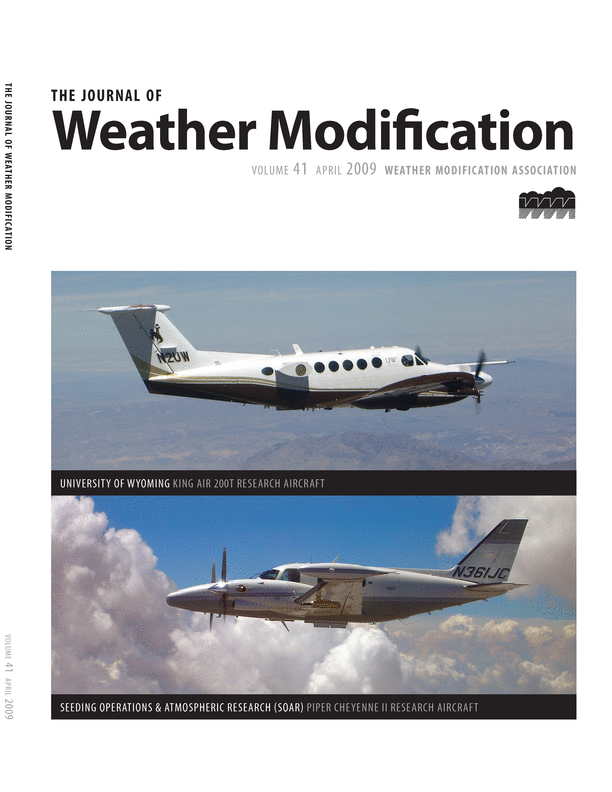30+ Winter Seasons Of Operational Cloud Seeding In Utah
DOI:
https://doi.org/10.54782/jwm.v41i1.175Abstract
North American Weather Consultants (NAWC) has conducted operational winter cloud seeding programs in many of the mountainous areas of Utah since 1974. The goal of these programs has been to enhance winter snowpack accumulation in several mountainous target areas throughout the State. Studies have demonstrated that a large majority of the annual runoff in Utah streams and rivers is derived from melting snowpacks, which explains the focus on wintertime seeding. Augmented water supplies are typically used for irrigated agriculture or municipal water supplies. Programs are typically funded at the county level with cost-sharing grants from the Utah Division of Water Resources. Cloud seeding is accomplished using networks of ground-based, manually operated silver iodide generators located in valley or foothill locations upwind of the intended target mountain barriers. As such, these programs are classified as orographic winter cloud seeding programs. Orographic winter cloud seeding programs are typically categorized as those with the highest level of scientific support based upon capability statements of such organizations as the American Meteorological Society, the World Meteorological Organization, and the Weather Modification Association. NAWC historical target/control evaluations of these Utah programs based upon high elevation precipitation and snow water content observations indicate a range of apparent increases in target area average precipitation or April 1st snow water content of 3-21%. The Utah Division of Water Resources conducted an independent assessment of the seeding programs in 2000. That assessment confirmed the NAWC indicated increases in snow water content, and then took the additional step of estimating the increases in annual streamflow resulting from the estimated increases in snow water content. Average annual increases from four seeded areas were estimated to total 249,600 acre-feet. Factoring in the cost of conducting these programs resulted in an estimate of the average cost of the augmented runoff to be $1.02 per acre-foot.Downloads
Issue
Section
Scientific Papers
License
Authors that submit papers for publication agree to the Journal’s copyright and publication terms. Authors retain copyright and grant the journal right of first publication with the work simultaneously licensed under a Creative Commons Attribution License that allows others to share the work with an acknowledgement of the manuscript’s authorship and initial publication in Journal of Weather Modification. Authors are able to enter into separate, additional contractual arrangements for the non-exclusive distribution of the journal’s published version of the work (e.g., post it to an institutional repository or publish it in a book), with an acknowledgement of its initial publication in the Journal of Weather Modification. Authors are permitted to post their work online (e.g., in institutional repositories or on their website) prior to and during the submission process to encourage productive exchanges and greater citation of the published article.
Articles are published online using restricted access for the first year. After the first year, articles are made freely available online. Immediate open access for an article may be obtained by the author paying an open access fee which is in addition to the normal page changes. Authors are expected to honor a page charge in order to support publication and distribution of the journal. After the author approves the gallery formatted version for publication, the Weather Modification Association’s Secretary will invoice the corresponding author for the page charges and payment is due within 30 days.
How to Cite
30+ Winter Seasons Of Operational Cloud Seeding In Utah. (2009). The Journal of Weather Modification, 41(1), 23-37. https://doi.org/10.54782/jwm.v41i1.175




